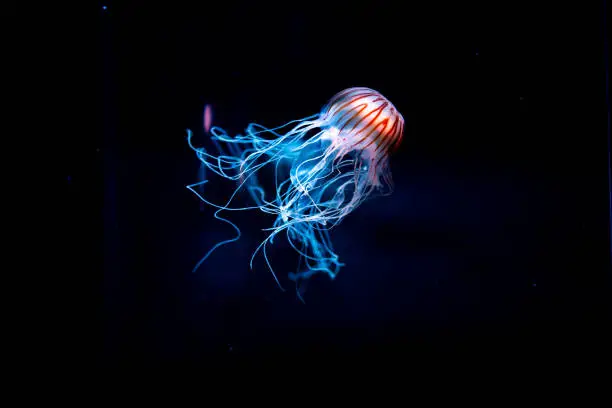Table of Contents
Scientific Classification
- Kingdom: Animalia
- Phylum: Cnidaria
- Class: Scyphozoa (true jellyfish), Cubozoa (box jellyfish), Hydrozoa (hydrozoans), and Staurozoa (stalked jellyfish)
- Order: Multiple orders
- Family: Varies by species
- Common Names: Jellyfish, sea jellies, medusae
Description
Jellyfish are truly mesmerizing creatures of the sea. With their transparent, bell-shaped bodies and long, flowing tentacles, they capture our attention effortlessly. Interestingly, despite what their name suggests, jellyfish aren’t actually fish at all; they belong to a group called Cnidaria, which also includes corals, sea anemones, and hydras. What sets jellyfish apart is that their bodies are made up of about 95% water, giving them that gelatinous appearance. They lack bones, hearts, lungs, and even brains, yet they manage to thrive in oceans all over the world. Their graceful movements and vibrant colors make them a delight to observe. Some species even have stinging tentacles, which adds a bit of intrigue to their beauty.
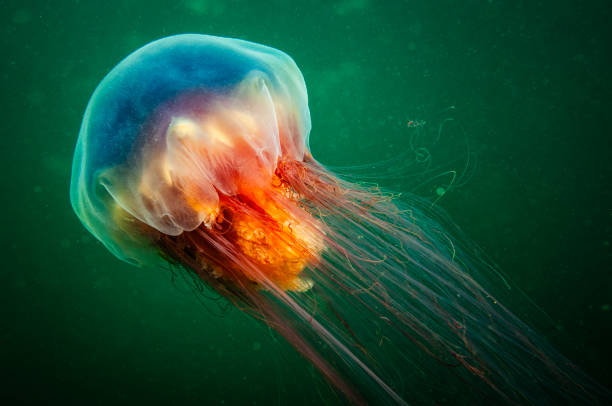
Distribution
Jellyfish can be found in every ocean, from the sunlit surface waters all the way down to the mysterious depths of the sea trenches. Their reach is truly global, covering:
– Tropical waters, like the box jellyfish that hangs out near Australia
– Temperate zones, where you can spot moon jellyfish in both the Atlantic and Pacific Oceans
– Polar regions, home to the impressive lion’s mane jellyfish in the Arctic seas
Interestingly, some jellyfish species have even adapted to live in brackish and freshwater environments. For instance, the freshwater jellyfish, Craspedacusta sowerbii, has made its way into lakes and reservoirs all around the world.
Habitat
Most jellyfish can be found in coastal waters, where they thrive thanks to sunlight, nutrients, and ocean currents that support their reproduction and feeding. They often drift along with these currents, a behavior known as being planktonic. You can spot them hovering in specific layers of the ocean, like the epipelagic and bathypelagic zones.
Some jellyfish like the deep-sea Stygiomedusa gigantea live in depths over 7,000 feet, where light never reaches and water temperatures drop significantly.
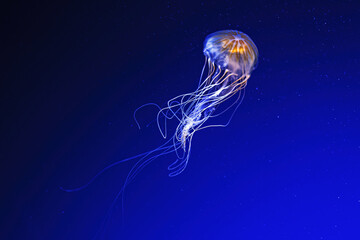
Diet
Jellyfish are fascinating carnivores that rely on a unique method of hunting. They use their tentacles, which are equipped with special stinging cells called cnidocytes. These cells can shoot out tiny harpoons filled with toxins that can paralyze or even kill their prey.
So, what do jellyfish typically eat? Their menu includes:
– Zooplankton
– Small fish
– Fish eggs and larvae
– Copepods and krill
– Other jellyfish (in some species)
Once a jellyfish has immobilized its meal, it uses its oral arms to guide the food into its central mouth. Digestion takes place in the gastrovascular cavity, where the jellyfish absorbs nutrients and gets rid of waste through the same opening.
Behavior
- Jellyfish might not have a central nervous system, but they sure know how to get around and thrive in their environment.
Here are some key behaviors that define them: - Pulsatile movement: They swim vertically by rhythmically contracting their bell.
- Passive drifting: For horizontal movement, they mostly go with the flow of ocean currents.
- Vertical migration: Some species rise to the surface at night and descend during the day to avoid predators.
- Swarming: When conditions are right, like temperature and nutrient availability, jellyfish can gather in large numbers, creating stunning blooms.
Lifespan
The lifespan of jellyfish can really vary based on their species:
– Moon Jellyfish (Aurelia aurita): 6 months to 1 year
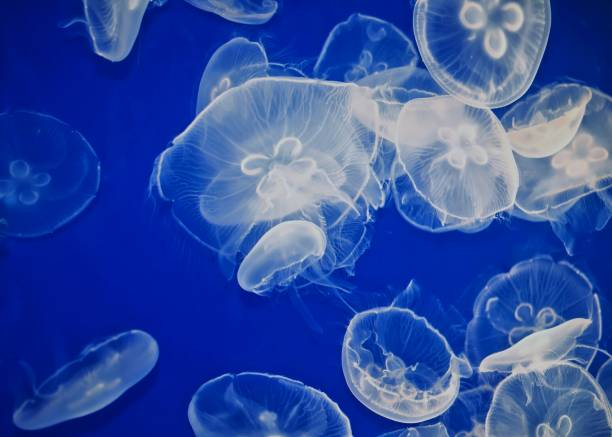
– Box Jellyfish (Chironex fleckeri): Less than 1 year
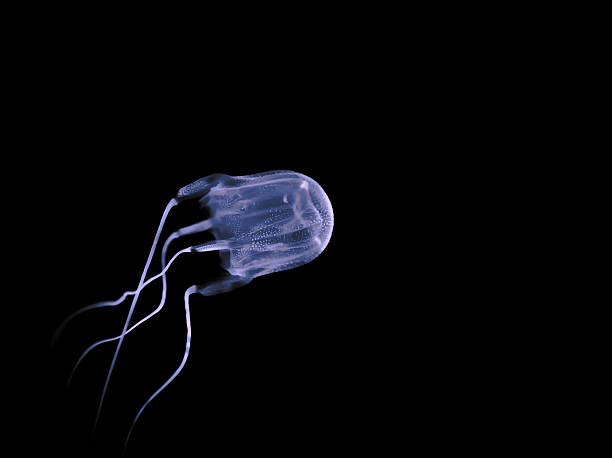
– Lion’s Mane Jellyfish: Up to 1 year
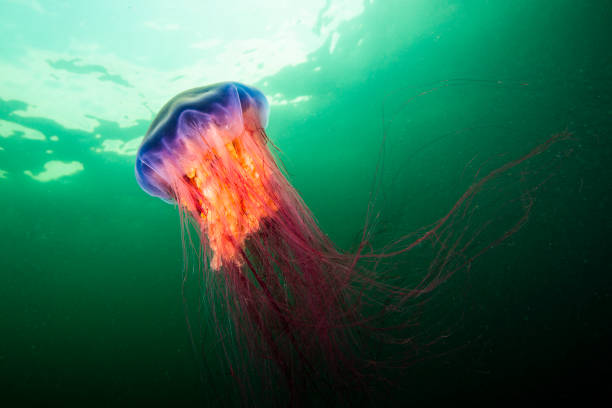
– Immortal Jellyfish (Turritopsis dohrnii): Potentially indefinite, as it can revert back to its polyp stage.
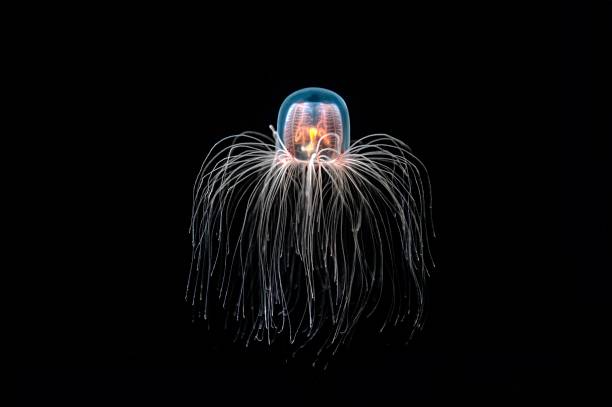
The Turritopsis dohrnii is quite remarkable. It has the ability to return to an earlier life stage, which allows it to escape death. That’s why it’s often referred to as the “immortal jellyfish.”
Reproduction and Lifecycle
Jellyfish have a fascinating way of reproducing, using both sexual and asexual methods, and their lifecycle is quite intricate, featuring several different forms.
Lifecycle Stages:
Medusa (adult jellyfish): This is where the magic happens! Adult jellyfish reproduce sexually by releasing eggs and sperm into the water.
Planula: After fertilization, a free-swimming larva called a planula is formed.
Polyp: The planula eventually settles on a surface and transforms into a stationary polyp.
Strobilation: This polyp then undergoes a process called asexual budding, producing numerous juvenile jellyfish.
Ephyra: These are the tiny, free-swimming immature jellyfish that emerge.
Medusa: Finally, they mature into adult jellyfish, and the whole cycle begins anew.
This unique alternating lifecycle allows jellyfish populations to grow rapidly when conditions are just right.
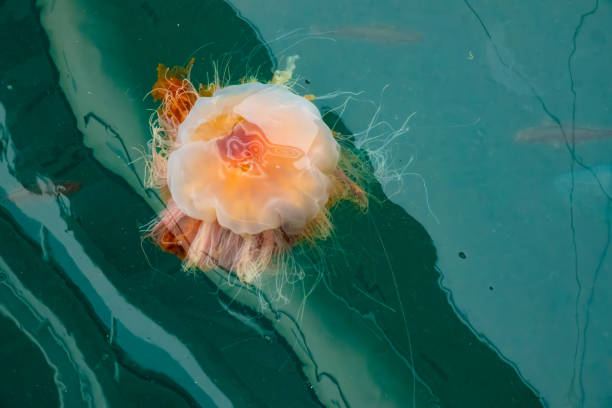
Predators
Jellyfish are pretty well-protected, yet they still find themselves on the menu for various marine creatures.
Here are some of their natural predators:
– Sea turtles, especially the leatherback variety
– Ocean sunfish, also known as Mola mola
– Seabirds
– Larger fish like tuna and swordfish
– Humans, as jellyfish are considered a delicacy in some cultures
– Crabs and other jellyfish
Despite their defenses, jellyfish have a soft body and aren’t very nutritious, which makes them less appealing compared to other marine snacks. This might just be why you see so many of them around!
Adaptations
Jellyfish have been around for over 500 million years, making them some of the oldest creatures on our planet.
When it comes to survival, they’ve got some pretty impressive adaptations:
- Stinging Cells (Cnidocytes): These help them catch their food and protect themselves from threats.
- Transparency: Their clear bodies make them almost invisible in the water, which is a great trick for avoiding predators.
- Bioluminescence: Some jellyfish can glow in the dark, either to scare off enemies or to attract their next meal.
- Regeneration: Certain species can regrow lost body parts, which definitely boosts their chances of survival.
- Lifecycle Reversal: Unique to the Turritopsis dohrnii, this fascinating ability gives them a form of biological “immortality.”
All these traits are crucial for jellyfish survival, especially in environments where competition and predation are tough.
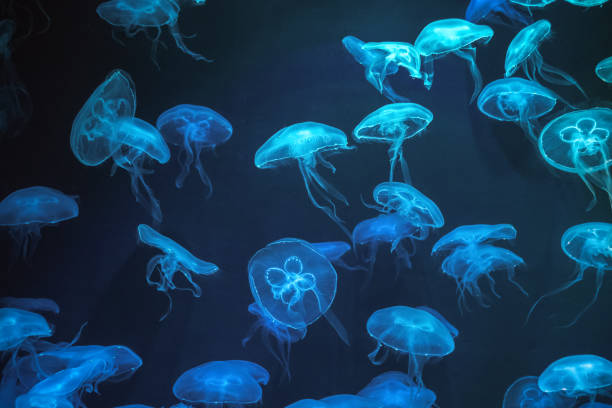
Conservation Status
While many jellyfish species are quite common, their populations can be affected by changes in the environment. Some of these changes can be beneficial, but others can have negative consequences.
Threats:
– Climate change (warmer waters can lead to more jellyfish blooms)
– Pollution (nutrient runoff boosts algae and zooplankton, which are food sources for jellyfish)
– Overfishing (removes their predators and competitors)
– Habitat destruction
Impact of Blooms:
Jellyfish blooms can pose a threat to local fisheries. They can also clog cooling systems at power plants and negatively affect fish populations. These blooms often occur when ecosystems are out of balance, serving as a warning sign of deeper environmental problems.
Conservationists aren’t primarily concerned about jellyfish facing extinction. Instead, they focus on how the increasing numbers of jellyfish are affecting marine ecosystems.
Jellyfish Stings: Risks and Remedies
Getting stung by a jellyfish can range from a minor annoyance to a serious health risk, depending on the type of jellyfish involved. Here’s what you need to know:
Symptoms:
- – A burning sensation
- – Red, irritated skin
- – Itching and swelling
- – In more severe cases, you might experience difficulty breathing, muscle cramps, or even cardiac arrest.
First Aid for Jellyfish Stings:
- – Rinse the affected area with vinegar if you’ve been stung by a box jellyfish or a similar species; this helps neutralize the stingers.
- – Avoid rubbing the sting site or rinsing it with freshwater, as this can cause more venom to be released.
- – Carefully remove any tentacles using tweezers or gloved hands.
- – Soak the sting area in hot water (but not scalding) to help alleviate the pain.
Seek medical attention for severe reactions, especially with species like Chironex fleckeri (box jellyfish).
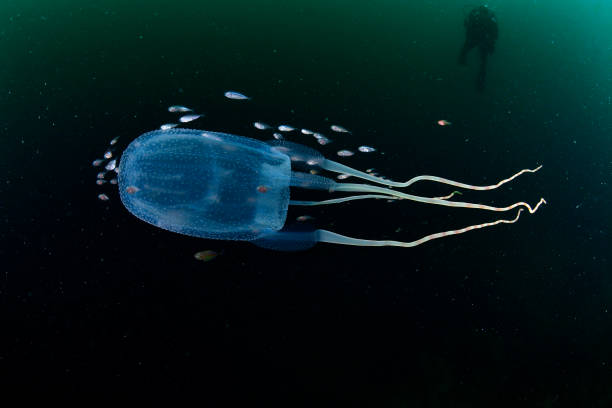
Interesting Facts
Did you know some fascinating things about jellyfish? For starters, these creatures don’t have a brain, but they can still react to their surroundings thanks to a nerve net. The lion’s mane jellyfish, the largest of its kind, boasts tentacles that can stretch over 100 feet long! Interestingly, we sometimes use satellites and drones to monitor jellyfish populations, which helps us grasp how they impact human activities. When jellyfish gather, they form a group known as a “smack,” although you might also hear them referred to as a “bloom” or “swarm.” Plus, researchers are diving into the potential of jellyfish collagen for biomedical applications, as it could play a role in wound healing and drug delivery.
Final Thoughts
Jellyfish are far more than just the squishy blobs floating in our oceans. They’re ancient survivors, masters of adaptation, and crucial indicators of the health of our seas. Even without eyes, ears, or a brain, they manage to thrive in environments where many other species struggle. They offer us a glimpse into the changes happening in our oceans and share tales of evolution and resilience.
With their mesmerizing pulsing movements and their infamous sting, jellyfish challenge our perceptions of intelligence, adaptation, and the essence of life itself.

